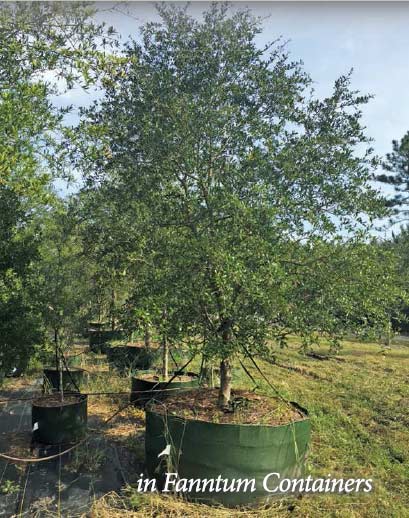SERVICES
We sell only one thing…Live Oak Trees – we deliver, we plant. Complete maintenance programs including pruning and fertilization.
FASTEST GROWING OAK!
Few trees are as strong and awe-inspiring as the live Oak. A large, spreading tree with reclining branches, it thrives in rich, coastal soils and along the banks of streams and rivers.
Often covered in Spanish Moss, the tree evokes images of southern weddings and historical small towns. With the moss draping over its long branches, the live Oak has one of the most distinctive appearances of any tree. Its impressive branches wind out toward the sky, causing speckled light to filter to the ground beneath it.
The strength of the tree's wood is legendary. It was a common component of early American ships, specifically used to make hulls because of its curved nature and incredible tensile strength. The wood is a soothing yellow-brown in color.
Acorns, a by-product of the tree, are a sweet attraction to a variety of birds and animals including ducks, deer and squirrels.
IT IS EASY TO PLANT & CARE FOR YOUR LIVE OAK TREE
Choosing a location: Because of its broad, sweeping branches, ensure there is ample room when planting to accommodate this fast-growing beauty. When choosing your location, pick a spot that will accommodate a full-grown oak, they can grow to as high as 60-80 feet tall and 60-100 feet wide at maturity. Do not plant too close to structures, streets, or sidewalks.
Planting directions:
1) Dig your hole and make it twice as wide as the diameter and as deep as the depth of the root ball.
2) Mix in good compost with the soil, you've removed from the planting site. The addition of beneficial mycorrhizal fungi is the best contribution you can make to your oak tree's soil and to the long-term viability of your tree. (Available for purchase in Diehard Transplant Fertilizers).
3) Keep the tree straight as you backfill in the hole, gently tamping down the soil with your shovel until it's firm.
4) Water the planting area thoroughly, allowing the water to really soak into the ground. Spread a 2-3 inch layer of mulch around the tree, but avoid it being too close to the base, as this will promote fungus and rot.
Watering:
Over-watering is a common tree care mistake. A damp soil that dries for a short period will allow adequate oxygen to permeate the soil. As a rule of thumb, your soil should be kept moist. Usually 30 seconds with a steady stream of water from a garden hose once a week in the cooler seasons is sufficient. In warmer climates, you may need to water 2-3 times weekly. Cease watering during the winter.
Pruning: Pruning your tree during the winter months will allow it to care for its wounds in spring, when it will recover more quickly. At first, limit trimming only to dead or broken branches on newly planted trees. Two to three years after planting, you can begin developmental trimming to shape the tree.
Fertilizing:
Oak trees experience a quick spurt of growth in the spring, followed by slower spurts of growth throughout the summer and fall seasons. Apply your fertilizer in the early spring before this initial spring growth spurt starts. The best fertilizers for oaks are those with a nutrient ratio of 12-6-6 or 12-4-8. While a healthy oak tree doesn't technically require fertilization, occasional feeding can help boost tree growth and acorn production.
Oak wood has a very high density creating great strength and hardness. The wood was widely used in early civilizations for sea ships in exploration. Oaks were held in such high esteem, that they were used as congregation points for village elders when determining laws and morals of their township. Oaks can grow to be very ancient, providing they are able to mature. There are some of these trees alive today, that are said to be over 1000 years old!


CALL US TODAY AT ♦ (910) 232-0280
ADDRESS
Live Oak Trees NC
3901 Aspen Road
Castle Hayne NC 28429
Phone Number:
(910) 232-0280
Email:
BateyJim@gmail.com
BUSINESS HOURS
Open 7 days a week
Please call for an appointment
